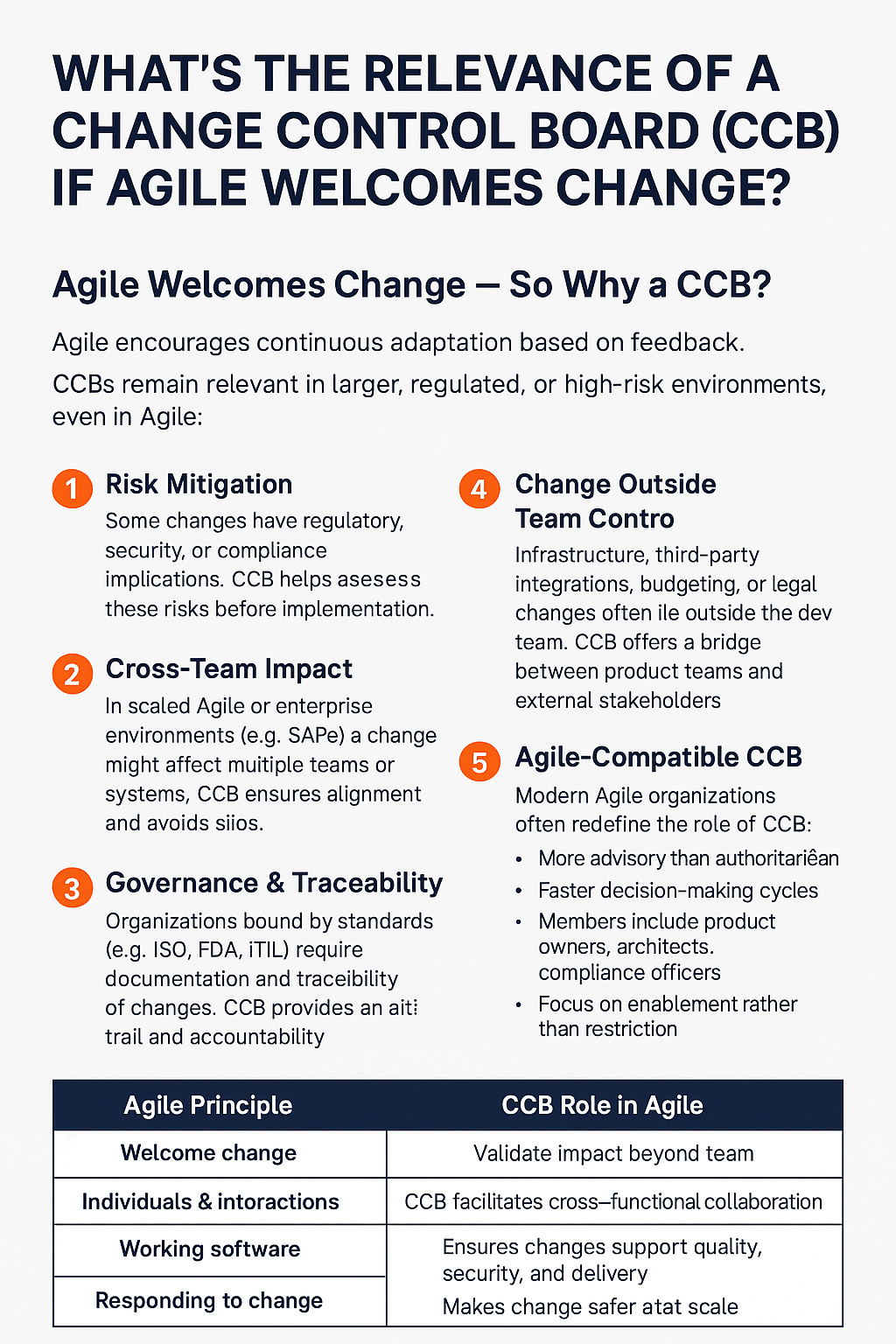🔄 Agile Welcomes Change — So Why a CCB?

✅ Agile Philosophy
- Agile encourages continuous adaptation based on feedback.
- Changes are expected and welcomed—even late in development.
- Teams often handle change internally during backlog grooming, sprint planning, or reviews.
🧭 So Where Does a CCB Fit In?
In larger, regulated, or high-risk environments (e.g., healthcare, banking, defense), a Change Control Board remains relevant, even in Agile:
🔒 1. Risk Mitigation
Some changes have regulatory, security, or compliance implications.
CCB helps assess these risks before implementation.
🧩 2. Cross-Team Impact
In scaled Agile or enterprise environments (e.g., SAFe), a change might affect multiple teams or systems.
CCB ensures alignment and avoids silos.
🔍 3. Governance & Traceability
Organizations bound by standards (e.g., ISO, FDA, ITIL) require documentation and traceability of changes.
CCB provides an audit trail and accountability.
🔄 4. Change Outside Team Control
Infrastructure, third-party integrations, budgeting, or legal changes often lie outside the dev team.
CCB offers a bridge between product teams and external stakeholders.
🔄 5. Agile-Compatible CCB
Modern Agile organizations often redefine the role of CCB:
- More advisory than authoritarian
- Faster decision-making cycles
- Members include product owners, architects, compliance officers
- Focus on enablement rather than restriction
🧠 Think of It This Way:
Agile teams handle most changes.
CCB steps in when stakes, scope, or complexity require wider accountability.
